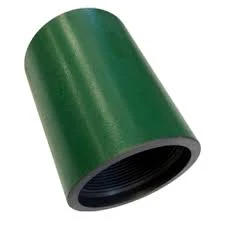- Afrikaans
- Albanian
- Amharic
- Arabic
- Armenian
- Azerbaijani
- Basque
- Belarusian
- Bengali
- Bosnian
- Bulgarian
- Catalan
- Cebuano
- Corsican
- Croatian
- Czech
- Danish
- Dutch
- English
- Esperanto
- Estonian
- Finnish
- French
- Frisian
- Galician
- Georgian
- German
- Greek
- Gujarati
- Haitian Creole
- hausa
- hawaiian
- Hebrew
- Hindi
- Miao
- Hungarian
- Icelandic
- igbo
- Indonesian
- irish
- Italian
- Japanese
- Javanese
- Kannada
- kazakh
- Khmer
- Rwandese
- Korean
- Kurdish
- Kyrgyz
- Lao
- Latin
- Latvian
- Lithuanian
- Luxembourgish
- Macedonian
- Malgashi
- Malay
- Malayalam
- Maltese
- Maori
- Marathi
- Mongolian
- Myanmar
- Nepali
- Norwegian
- Norwegian
- Occitan
- Pashto
- Persian
- Polish
- Portuguese
- Punjabi
- Romanian
- Russian
- Samoan
- Scottish Gaelic
- Serbian
- Sesotho
- Shona
- Sindhi
- Sinhala
- Slovak
- Slovenian
- Somali
- Spanish
- Sundanese
- Swahili
- Swedish
- Tagalog
- Tajik
- Tamil
- Tatar
- Telugu
- Thai
- Turkish
- Turkmen
- Ukrainian
- Urdu
- Uighur
- Uzbek
- Vietnamese
- Welsh
- Bantu
- Yiddish
- Yoruba
- Zulu
Innovative Techniques in Crossover Drilling Equipment for Enhanced Performance and Efficiency
The Evolution and Importance of Crossover Drilling Tools
In the ever-evolving landscape of the oil and gas industry, drilling technology has witnessed remarkable advancements, significantly enhancing efficiency and safety. One such innovation that stands out is the crossover drilling tool. As defined by its name, a crossover drilling tool serves a critical function by facilitating the transition between different drilling systems and environments. This article explores the role, benefits, and implications of crossover drilling tools in modern drilling operations.
What is a Crossover Drilling Tool?
A crossover drilling tool is designed to enable the seamless connection and compatibility between different types of drilling rigs and equipment. It allows operators to switch between various drilling systems without the need for extensive modifications or the use of multiple individual components. This versatility is crucial in environments where conditions can change rapidly, requiring operators to adapt their equipment to suit different geological formations or drilling techniques.
Key Functions and Features
Crossover tools typically feature a robust design that can withstand the intense forces and pressures encountered during drilling operations. They are equipped with various interfaces to connect with both surface and downhole equipment. For instance, a crossover tool may link rotary drill strings with wireline services, mud motors, or other tools that have different connection specifications. This adaptability is essential in extended reach drilling (ERD), horizontal drilling, or in well intervention applications.
One of the crucial aspects of crossover tools is their ability to minimize downtime. In traditional drilling scenarios, switching between tools could lead to delays that severely impact productivity. However, with crossover tools, operators can efficiently transition between systems, reducing the time spent on rig modifications and enhancing overall operational efficiency.
Benefits of Crossover Drilling Tools
1. Flexibility One of the primary advantages of crossover drilling tools is their flexibility. They allow drilling teams to adapt quickly to changing operational requirements, whether that involves switching from a drilling rig to a workover rig or integrating other downhole tools. This adaptability enhances drilling efficiency, especially in complex geological formations.
crossover drilling tool

2. Cost Efficiency By reducing downtime and eliminating the need for multiple specialized tools, crossover drilling tools can lower operational costs significantly. Companies can optimize their resources, utilizing a single tool for multiple applications rather than investing in separate tools for each specific need.
3. Safety Enhancement Safety is paramount in drilling operations, and crossover tools contribute to safer practices by minimizing the need for manual connections between various systems. Automated connections reduce human error, which is often a leading cause of accidents in high-pressure environments.
4. Improved Performance The seamless integration provided by crossover tools leads to enhanced overall drilling performance. With better coordination between different systems, operators can achieve more effective drilling rates and maintain better control over wellbore conditions.
5. Technological Integration Modern crossover drilling tools often come equipped with advanced technology, including sensors and real-time monitoring capabilities. This integration allows for better data collection and analysis, leading to improved decision-making processes during drilling operations.
The Future of Crossover Drilling Tools
As the industry continues to push for greater efficiency and sustainability, the future of crossover drilling tools looks promising. Innovations such as automation, artificial intelligence, and advanced materials are likely to enhance the functionality and durability of these tools. Additionally, as more exploration and production activities occur in challenging environments, the need for versatile and robust crossover systems will only increase.
The integration of crossover drilling tools into drilling operations represents a significant leap forward in the quest for efficiency and safety in the oil and gas sector. As the industry faces evolving challenges, these tools will be vital in navigating complex drilling scenarios, ensuring that operators can respond swiftly and effectively to any situation.
In conclusion, crossover drilling tools exemplify the blend of innovation and functionality necessary for today’s dynamic drilling environments. Their ability to enhance flexibility, improve cost efficiency, and boost safety underscores their growing significance within the drilling industry, paving the way for more advanced technologies that will shape the future of drilling operations.
-
Tubing Pup Joints: Essential Components for Oil and Gas OperationsNewsJul.10,2025
-
Pup Joints: Essential Components for Reliable Drilling OperationsNewsJul.10,2025
-
Pipe Couplings: Connecting Your World EfficientlyNewsJul.10,2025
-
Mastering Oilfield Operations with Quality Tubing and CasingNewsJul.10,2025
-
High-Quality Casing Couplings for Every NeedNewsJul.10,2025
-
Boost Your Drilling Efficiency with Premium Crossover Tools & Seating NipplesNewsJul.10,2025







